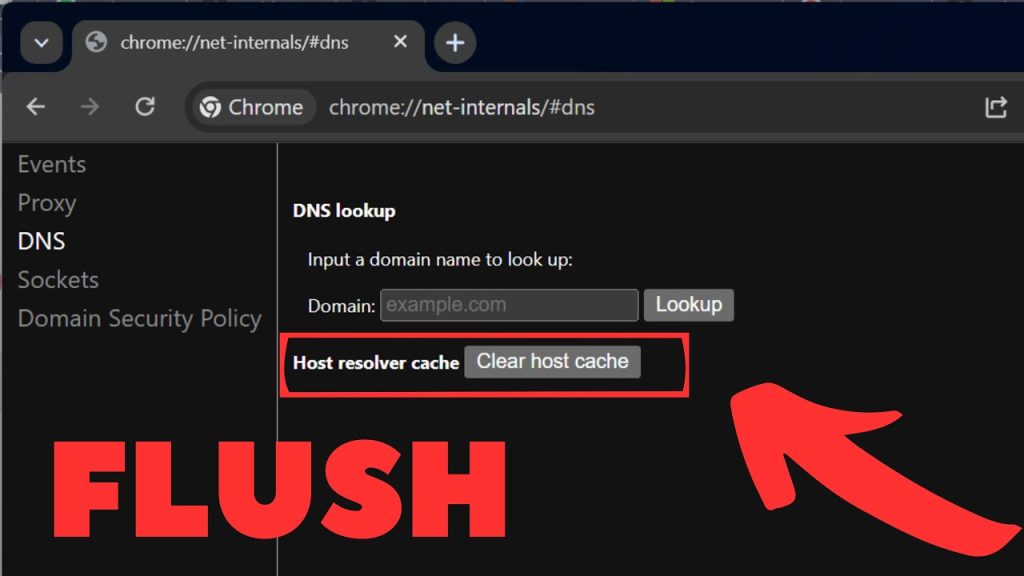In the vast expanse of the internet, Chrome //net-internals/#dns, Google Chrome stands as an undisputed leader among web browsers, esteemed for its user-friendly interface, unrivaled speed, and impeccable performance. While most users are content with merely skimming the surface of this digital gem, there exist hidden functionalities that, if harnessed, can provide a deeper understanding of the web browsing experience. One such concealed feature is “chrome //net-internals/#dns.” In this comprehensive article, we will embark on a journey to unravel the intricacies of this enigmatic aspect of Chrome and uncover its profound significance in the world of internet browsing.
The Mystery Behind “Chrome //net-internals/#dns”
To commence our expedition into the depths of chrome //net-internals let’s first decipher the intriguing term itself. At initial glance, it may appear as an arbitrary string of characters, but it is, in reality, the portal to a powerful suite of tools and insights related to the Domain Name System (DNS) within Chrome.
Understanding DNS: The Internet’s Nervous System
Before we plunge headfirst into the functionality of “chrome://net-internals/#dns,” it is imperative to grasp the fundamental concept of DNS. DNS, often likened to the nervous system of the internet, serves as a vital translator between human-friendly domain names (such as www.example.com) and machine-friendly IP addresses (think 192.168.1.1). Whenever you type a web address into your browser’s address bar, the DNS swoops into action, diligently locating the corresponding IP address, and thereby enabling your browser to retrieve the requested web page.

The Multifaceted Purpose of “Chrome //net-internals/#dns”
Now that we have laid a strong foundation by understanding DNS, let’s embark on a journey to uncover why “chrome //net-internals/#dns” exists. This hidden feature serves several pivotal purposes, each contributing to a seamless browsing experience:
1. DNS Troubleshooting: A Lifesaver in Internet Distress
“Chrome //net-internals/#dns” stands as a vigilant sentinel, ever-ready to diagnose and resolve DNS-related issues that may crop up during your digital journey. Whether you are grappling with a sluggish connection or persistent DNS lookup failures, this tool dons the cape of the troubleshooter, diligently pinpointing the root cause and guiding you towards a resolution.
2. Clearing the DNS Cache: The Refresh Button for Browsing
Over time, your browser accumulates a repository of DNS records in a cache, a commendable effort to expedite future visits to websites you frequent. However, like any digital archive, this cache can occasionally become corrupted or outdated, leading to connectivity woes. With “chrome //net-internals/#dns,” you hold the power to clear this cache with a few clicks, ensuring that your browser fetches the most current IP addresses when navigating the web.
3. DNS Pre-Fetching: Chrome’s Ace up Its Sleeve
Chrome’s reputation for blazing speed owes much to a technique known as DNS pre-fetching. Whenever you visit a webpage, Chrome can cleverly pre-fetch DNS information for links embedded within that page, rendering your browsing experience even swifter. “chrome //net-internals/#dns” grants you the privilege to monitor and control this pre-fetching process, offering a level of customization that ensures both speed and efficiency.
How to Access “Chrome //net-internals/#dns”
Now that we have illuminated the importance of “chrome //net-internals/#dns,” it’s time to unveil the path to accessing this hidden treasure trove of DNS-related insights within Chrome:
- Open Chrome: Begin by launching your Google Chrome browser on your trusty computer.
- Type the URL: In the address bar, with the confidence of a seasoned explorer, type “chrome://net-internals/#dns” and press Enter.
- Explore the Abundance: Upon entering this cryptic gateway, a cornucopia of options and data related to DNS will unfurl before your eyes. Take your time to navigate through the various tabs and features, allowing yourself to immerse in the world of DNS management and optimization.
Conclusion
In the grand tapestry of internet browsing, “chrome //net-internals/#dns” emerges as a hidden gem that bestows upon users the formidable prowess to manage, troubleshoot, and optimize their DNS settings. Acquainting yourself with this invaluable tool can significantly augment your browsing experience, equipping you with the means to surmount DNS-related challenges with finesse.
Henceforth, when you encounter the occasional doldrums of sluggish internet speeds or find yourself ensnared in the labyrinth of DNS-related concerns, let “chrome //net-internals/ #dns” be your guiding light—a beacon of clarity and resolution in the boundless sea of the digital universe.
FAQs:
Absolutely, “chrome://net-internals/#dns” is a safe and trusted tool for troubleshooting and managing DNS-related issues in Google Chrome. However, it is prudent to exercise caution and refrain from making any alterations unless you are well-versed in the necessary actions.
Unfortunately, “chrome://net-internals/#dns” is exclusive to the desktop version of Google Chrome and cannot be accessed on mobile devices.
The frequency of clearing the DNS cache using “chrome://net-internals/#dns” depends on your individual browsing habits. If you encounter DNS-related problems or wish to ensure optimal performance, consider clearing the cache as a periodic maintenance step.
While “chrome://net-internals/ #dns” won’t directly boost your internet speed, resolving DNS issues through this tool can contribute to a smoother and faster browsing experience by minimizing DNS-related delays.
Yes, other web browsers also offer tools and settings for managing DNS, though they may be accessed differently. Consult the documentation or support resources for your specific browser to discover analogous features and their respective functionalities.




